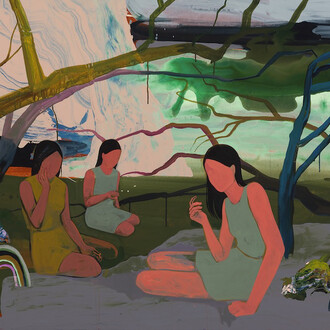Cavin-Morris Gallery is pleased to announce the exhibition Part II of the real surreal: travels in the preternatural. This second part of a three-part project showcases artists who, independently of any art movement, non-personal agenda or philosophy, have integrated art, and especially the process of making of art, into the very areas that the mainstream Surrealists, intellectually sought to achieve in their own work, with automatic writing and drawing, the immediacy of madness, the juxtapositions of diverse material objects, dreams, psychic phenomena, occult magic and Spiritualism among others.
It is our premise that Surrealism is alive and well in this universe and is often a natural proponent of culture itself. These phenomena named above are the everyday ‘realities’ of the artists who are part of, or on the fringes of Art Brut and we exhibit them together in this capacity in Travels into the Preternatural. They usually dance between labels.
Preternatural: an adjective used to describe something that transcends what we believe to be natural or ordinary.
Although many of these artists are animistic in their intentions or cultures their work is preternatural in that to the mainstream art world their art is inexplicable by ordinary means. Perhaps this is why to this date no one has ever been able to come close to defining it as a field. No one.
These artists make work for their immediate surroundings and cultures, for themselves, or for the Spirits. Some of them have had occult practices, some of them see themselves as mediumistic practitioners, some make amulets to protect and enhance their healing and spirit yards, some express visions that have taken over their lives, some live in the visionary worlds of their own story telling, some attempt to communicate the horrors and pain of warfare and racial or political persecution, visions that have dominated their every waking moment. Every one of them, in some way, lives immersed in the worlds they create.
It is our belief that previous definitions of this art have been hampered by canceling cultural experience as a requisite for an idealized paragon of artistic integrity. The infrastructure of this field has often erased the local realities of artist’ lives to simplify their marketing or to make it easier to brand them with one or two-word sobriquets. Only a colonial state of mind could force such a schism while at the same time allowing for the iconography of Christian culture so vital to the lives of many white mostly European artists. Art Brut, under Dubuffet’s stewardship sought to reduce the field to more easily define it. This policy ultimately fell short until the current Collection de l’Art Brut’s efforts to open more global doors.
So we demonstrate the Real Surreal. By example, we are showing the profound differences between what these global non-mainstream artists create in their lives naturally in contrast to the intellectual exercises of those no less important artists of Breton’s circle of Surrealists who deliberately sought those same modes of consciousness and unconsciousness. Dubuffet resisted the notion that Surrealism could define Art Brut without calling it Art Brut, and Breton defined Surrealism with Art Brut included but did not feel that the spiritualist art and art of mentally diverse creators should lose those labels and just be called Art Brut. Both men died before more facts and art history revealed the lives of many global non-mainstream artists. I think they both would have ultimately come to an agreement. I think the truth lies somewhere in the melding of both their visions as demonstrated, by no means encyclopedically, by the artists in this exhibition. The combination of their important visions contained multitudes.
Included are artists processing automatic writing given them by Spirits, artists using art to demonstrate out-of-body worlds and imaginary exalted states of being, art made to confront anger and protest at government suppression and racism, art made to express human dignity and human rights, art made to heal from wars, art made as sacred ceremonial tools, art used to call down souls spritualistically, art made as occult practice, and art made to mark a homeground in a world that seems out of control and slipping away. All of these were Surrealist goals.
The artists in this exhibition are almost all non-academically trained. They come from Art Brut or non-western cultures or personal practices and all of them ultimately deny neat categorization. But in most cases the art is not made for a gallery wall or to be part of a mainstream canon. The artists are very often Surrealists without Surrealist dogma. Their work exists as anarchic creativity with no boundaries.
Artists included in the exhibition include: Errol Lloyd Atherton, Vincent Atheron, Ilija Bosilj Bašičević, Everald Brown, William Fields, Bessie Harvey, Karel Havliček, Solange Knopf, Georges Liautaud, Stéphanie Denaes Lucas, Franck K. Lundangi, M’onma, Shinichi Sawada, Jon Serl, Bill Traylor, Gregory Van Maanen, Henriette Zéphir, and Carlo Zinelli.
















